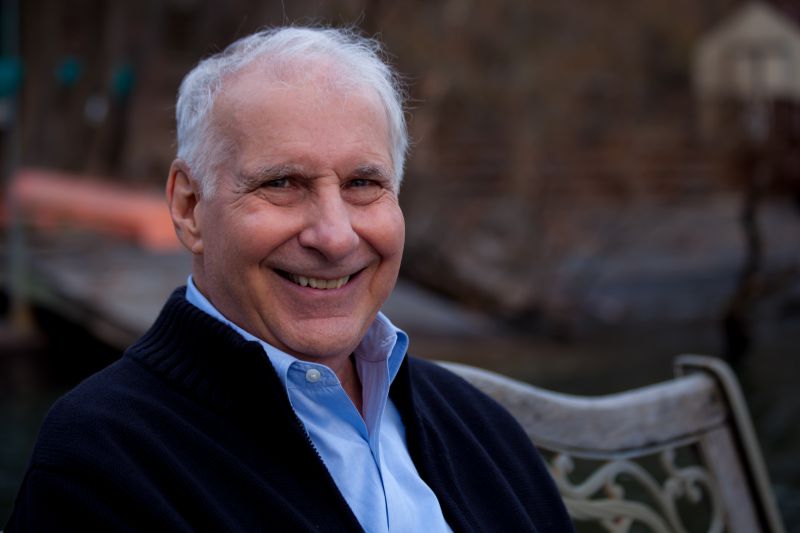The FDA Wants to Approve ECT Without Testing
- January 7, 2016
- / Peter Breggin MD
- / ECT,ect-articles,electroshock,Peter_Breggin

The FDA Wants to Approve ECT Without Testing
By Peter Breggin, MD
On December 29, 2015, the FDA proposed reclassifying ECT, essentially approving of its routine clinical use. The FDA describes its recommendation as follows:
“… To support reclassification of Electroconvulsive Therapy (ECT) Devices into class II (special controls) for severe major depressive episode (MDE) associated with Major Depressive Disorder (MDD) or Bipolar Disorder (BPD) in patients 18 years of age and older who are treatment-resistant or who require a rapid response due to the severity of their psychiatric or medical condition.”
The FDA is also proposing specific warnings that should go along with the ECT devices. The strongest of the warnings — “Warning: ECT device use may be associated with: disorientation, confusion, and memory problems” — is grossly inadequate and misleading.
In response to the FDA’s request for responses, I submitted the following statement. I urge others to respond quickly to the FDA’s call for comments. Comments are due by March 28, 2016.
The FDA Should Ban ECT Until It Goes Through Rigorous Testing
During routine ECT, the passage of the electric current through the brain causes an especially intense grand mal (generalized) convulsion, often accompanied by flat lining of the brain waves on the EEG and always resulting in a coma lasting several minutes or more. On awakening, the patient suffers from a syndrome associated with traumatic brain injury, including trauma followed by unconsciousness, memory loss, disorientation and confusion. The results, as with any trauma, grow worse with each exposure, as the ECT series progresses.
Therefore, there is no doubt that ECT damages the brain. Each treatment produces clinically obvious devastating acute results, described in many books and articles. The only question is “How complete is recovery?” and there is ample evidence that recovery is often incomplete, commonly leaving the individual with months of retrograde memory loss as well as ongoing cognitive losses. The long-term adverse effects closely parallel those of athletes who endure multiple high-impact concussions. It is clear that ECT is among the most dangerous treatments used in medicine, surgery or psychiatry. The idea that is has any redeeming benefit continues to lack empirical evidence. The common claim that it reduces the risk of suicide is not confirmed by a single scientific paper. In a system of rational medicine, ECT would be banned.
In 1985 the NIH Consensus Development Conference on ECT labeled it the “most controversial” treatment in psychiatry (5th attachment). It noted an average memory loss spanning 10 months (8 before and 2 after the ECT)! It found no empirical evidence for effectiveness beyond four weeks, which coincides with the period in which acute brain injury renders the individual either euphoric or apathetic, and too neurologically impaired to self-evaluate or to feel strong emotions. The evidence for brain damage has grown since 1985, including the publication of Sackeim’s 2007 long-term study in multiple clinical settings showing a lasting dementia syndrome in many patients (6th attachment). The NIH Consensus Conference conclusions and the Sackeim study, in and of themselves, are sufficient to demonstrate that ECT is highly dangerous and should be banned until it can be thoroughly tested in the manner at least as rigorous as for any new psychiatric medication.
I recently constructed an extensive free website, www.ECTresources.org. It contains PDFs of dozens of scientific papers with a search mechanism for subjects such as brain damage, cognitive dysfunction, memory loss, animal studies, and controlled clinical trials. It also contains my entire 1979 medical book on ECT which remains the most detailed documentation of brain injury.
A paper that I wrote for the FDA on ECT in 2010 was subsequently published in the peer-reviewed International Journal of Risk and Safety in Medicine (3rd attachment below). It is a very concise summary of relevant studies. Also see my jointly authored 2014 peer-reviewed paper on ECT and children, which presents my brief updated review on brain injury (Van Daalen-Smith, et al., 4th attachment.) My 1986 review on neuropathology of ECT was written on invitation as a scientific presenter at the NIH ECT Consensus Development Conference (2nd attachment). Along with my 1998 overview of ECT (1st attachment), the two articles and their many citations show that the harmful effects of ECT have been scientifically demonstrable for a long time.
As a physician and psychiatrist, I administered ECT in my training and supervised a ward on which it was commonly done. I have evaluated innumerable cases in which lives have been destroyed. I was also the medical expert in the first ECT malpractice suit won in trial in the case of a woman with devastating memory loss (Salters v. Palmetto Health Alliance et al. Court of Common Pleas, Fourth Judicial District, State of South Carolina, County of Richland. June 2005).
There is no scientific basis for the FDA not to ban ECT outright until its safety and efficacy have been tested. For the FDA to deny that ECT is a very dangerous treatment is unconscionable and can only be explained by the strength of the psychiatric lobby.
The ECT issue will be a turning point for the FDA. Where the need for a thorough study of safety and efficacy cannot be denied, will the FDA be swayed by pressure from professional and industry lobby groups? Or will the FDA do its duty to ban a traumatic treatment until its safety and efficacy can be tested through maximally stringent approval procedures? At a time when cynicism abounds in regard to the FDA and to psychiatry, the FDA’s decision will provide either a deepening of cynicism or a glimmer of hope. Meanwhile, if the FDA allows the continuation of ECT, it will be responsible for a continuing epidemic of iatrogenic brain injury.
WHO ARE THE “THEY” - THESE GLOBAL PREDATORS?
WHAT ARE THEIR MOTIVES AND THEIR PLANS FOR US?
HOW CAN WE DEFEND AGAINST THEM?
Covid-19 and the Global Predators: We are the Prey

“No other book so comprehensively covers the details of COVID-19 criminal conduct as well as its origins in a network of global predators seeking wealth and power at the expense of human freedom and prosperity, under cover of false public health policies.”
~ Robert F Kennedy, Jr
Author of #1 bestseller The Real Anthony Fauci and Founder, Chairman and Chief Legal Counsel for Children’s Health Defense.
 Psychiatric Drugs
Psychiatric Drugs
 Psychiatric Reform Accomplishments
Psychiatric Reform Accomplishments